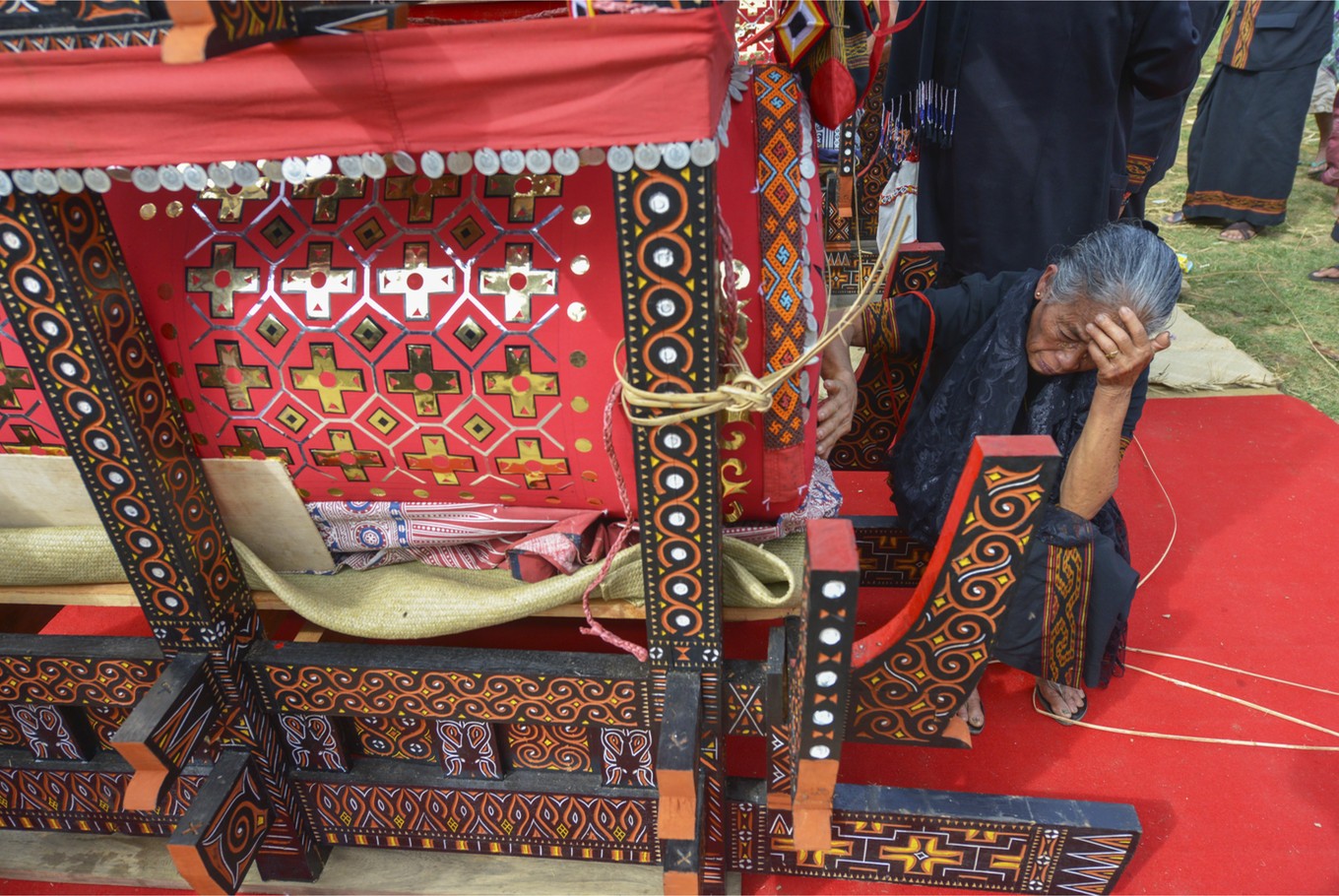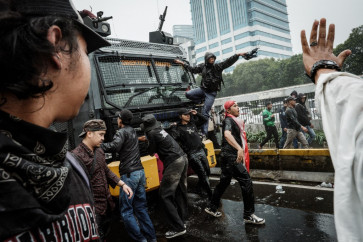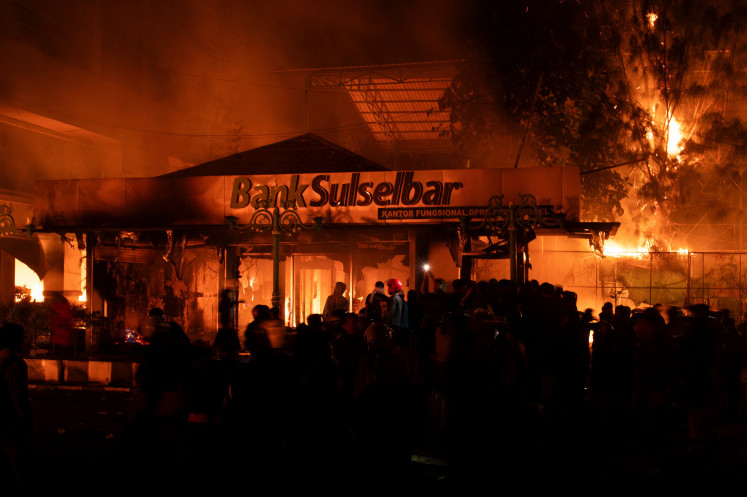Popular Reads
Top Results
Can't find what you're looking for?
View all search resultsPopular Reads
Top Results
Can't find what you're looking for?
View all search resultsRespecting the dead in Toraja
When a culture is rich, death is not always followed by tears.
Change text size
Gift Premium Articles
to Anyone
C’mon, Jintolo! I believe in you!” a woman shouted, calling a buffalo’s name.
Sitting with a crowd watching a buffalo fight in a big muddy field in Tondon district, North Toraja in South Sulawesi, the woman could not just sit quietly; she had high hopes for Jintolo to win the duel as she had placed a bet on his victory.
Not long after, the woman rejoiced as Jintolo was declared the winner.
The buffalo fight was part of a funeral ceremony held by the extended family of Paulus Rinda, who passed away in 2004 at the age of 115.
Paulus’ daughter, Damaris Palulun, said that the buffalo fight was one of many rituals for her father’s funeral ceremony, known locally as rambu solo, which was expected to conclude in 2018.
The Torajan people believe that a dead person is not yet dead if the rambu solo has not been completed.
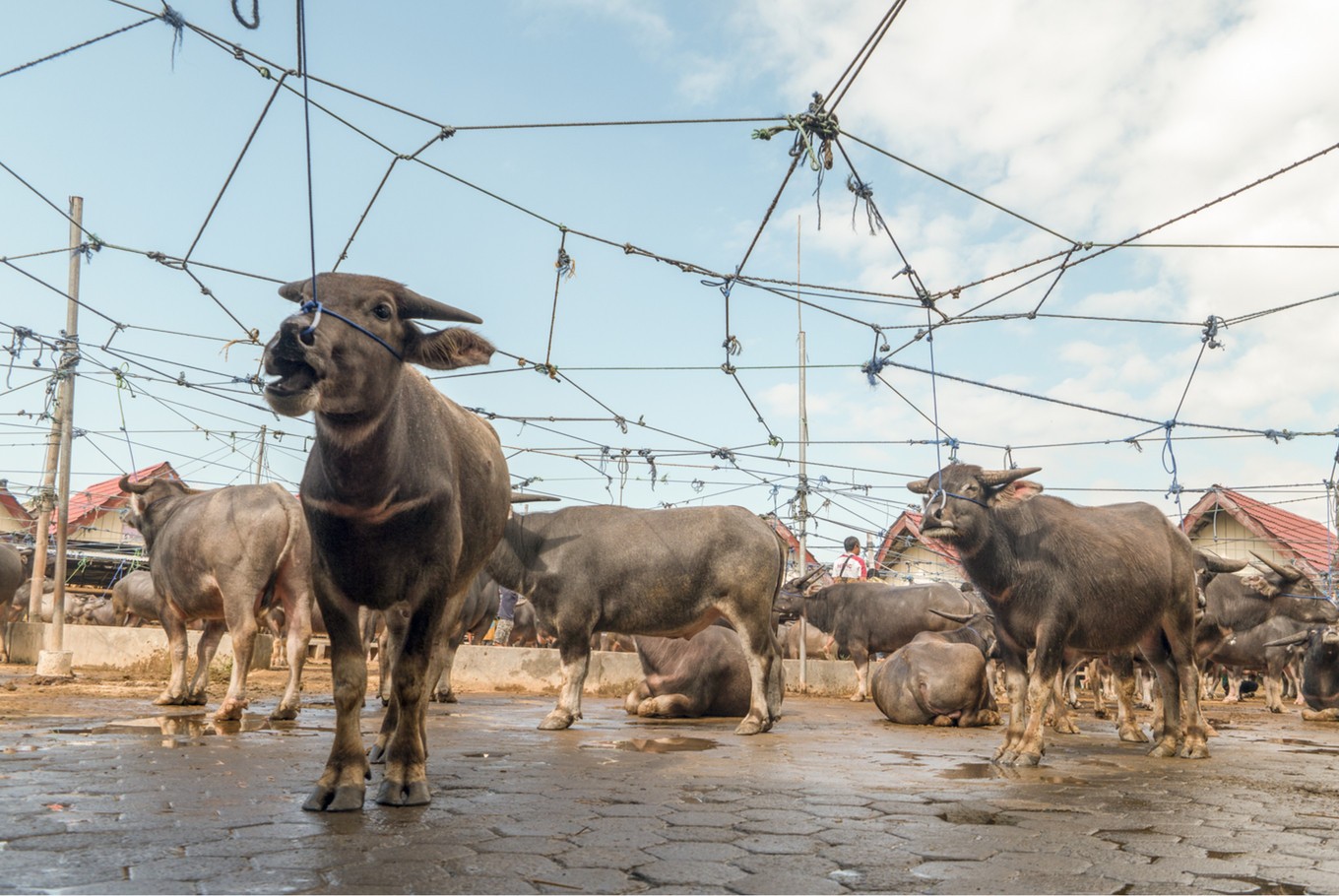 Buffalo market or Pasar Bolu in Tana Toraja.(Shutterstock, Inc./Muslianshah Masrie)
Buffalo market or Pasar Bolu in Tana Toraja.(Shutterstock, Inc./Muslianshah Masrie)
(Read also: Photo: Faces of Toraja)
Therefore, for Damaris, her father is still alive, although she knows that his heart stopped beating since an accident claimed his life in 2004. “He is still sleeping,” the 55-year-old said. Paulus’ corpse still lies in his room. Every day, Damaris, who works as an elementary school teacher, goes into his room to say goodbye before leaving for work.
Six month after Paulus’ death, his family slaughtered 115 buffaloes as part of the rambu solo ritual, known as mak bambangan, or the procession to change the position of the deceased from sitting to sleeping.
For the completion of the funeral ceremony, Paulus’ family has targeted slaughtering 400 buffaloes, having taken into account their financial capability. With everyone in the family contributing, they hope they will have all 400 buffaloes by 2018.
In December last year, as part of the rambu solo tradition, the deceased’s relatives held a buffalo fight.
“The rambu solo is not complete without a buffalo fight,” said Damaris.
In North Toraja, buffalo fighting is a tradition that has existed for a long time to entertain the deceased’s relatives.
Arianto Palumpun, who organized the buffalo fight, said that before the fight started, the buffalo owners had to place their bets.
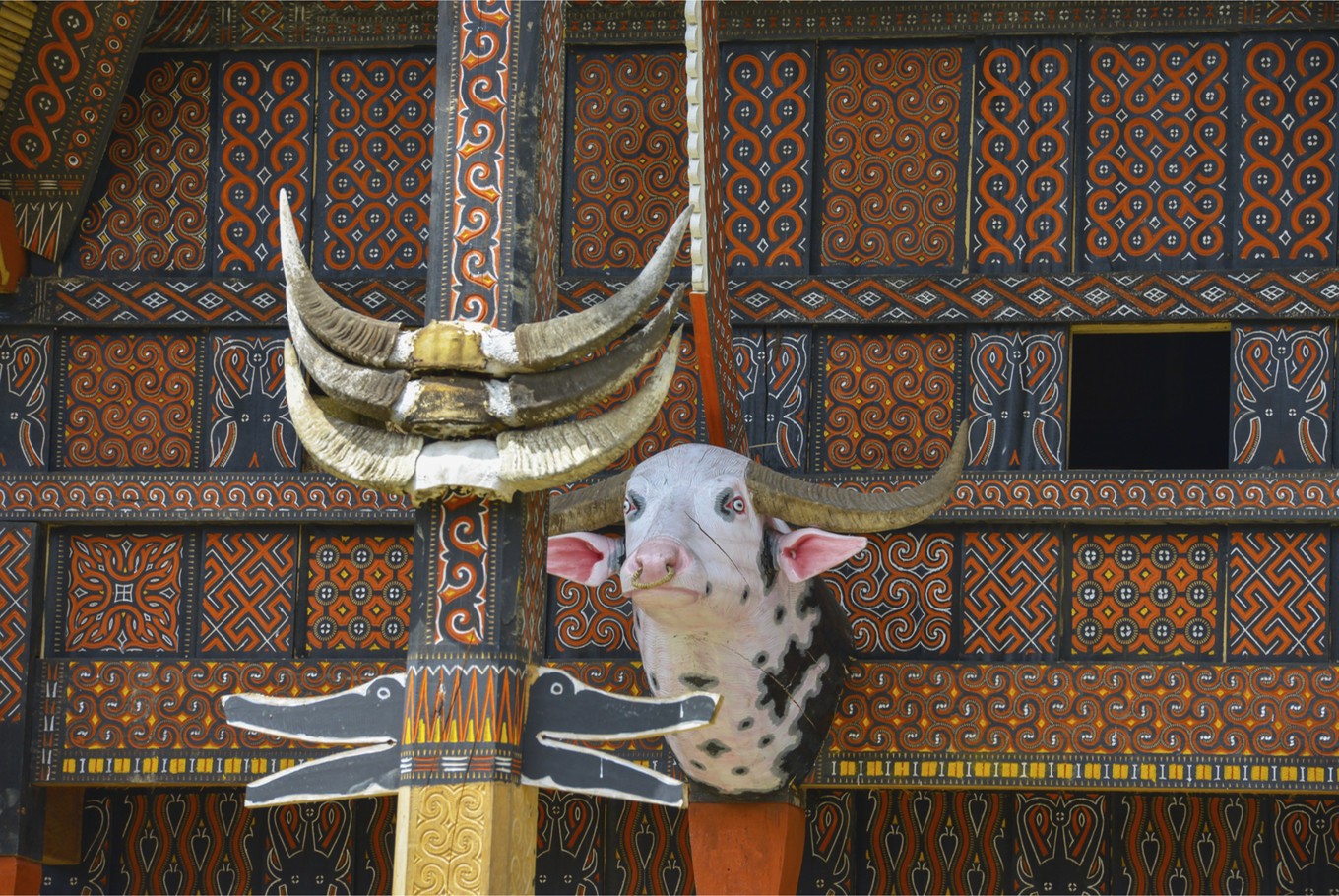 Toraja traditional Tongkongan house.(Shutterstock, Inc./File)
Toraja traditional Tongkongan house.(Shutterstock, Inc./File)
“[Buffalo owners] are not allowed to join the fight if there are no bets against them [from another buffalo owner],” he said.
Arianto said the minimum bet from the owner was Rp 10 million (US$743) per fight.
Meanwhile, spectators watching the fight were free to decide how much they wanted to bet.
During the buffalo fight in Tondon, some spectators took money out of their wallets to gamble, but others just watched and enjoyed the fight.
The buffalo’s names, like Jintolo, Chillo and John Kei, are written on their body for the fight.
Each fight consists of several rounds, with each round lasting for around 10 minutes.
Before the fight starts, each owner pushes their buffalo’s hunches to make them want to attack each other. The first buffalo that leaves the arena loses the fight.
With the buffalo fight and the number of buffaloes to be slaughtered, Paulus Rinda’s funeral ceremony is considered lavish.
“We want to make a big ceremony,” one of his grandsons, Devit Chrismanto, admitted.
When asked about the family’s all-out efforts to spend so much money on the rambu solo, Devit said that it was all worth it.
“It is fine. At least, my children can still go to school and I haven’t had to sell my home,” said the 37-year-old.
The family’s decision to hold a lavish funeral was because they wanted the ritual to be their final tribute to show their love to their father and grandfather.
“The Torajan people work hard not just for fun, but for family. This is proof that we really love our parents,” Damaris said.
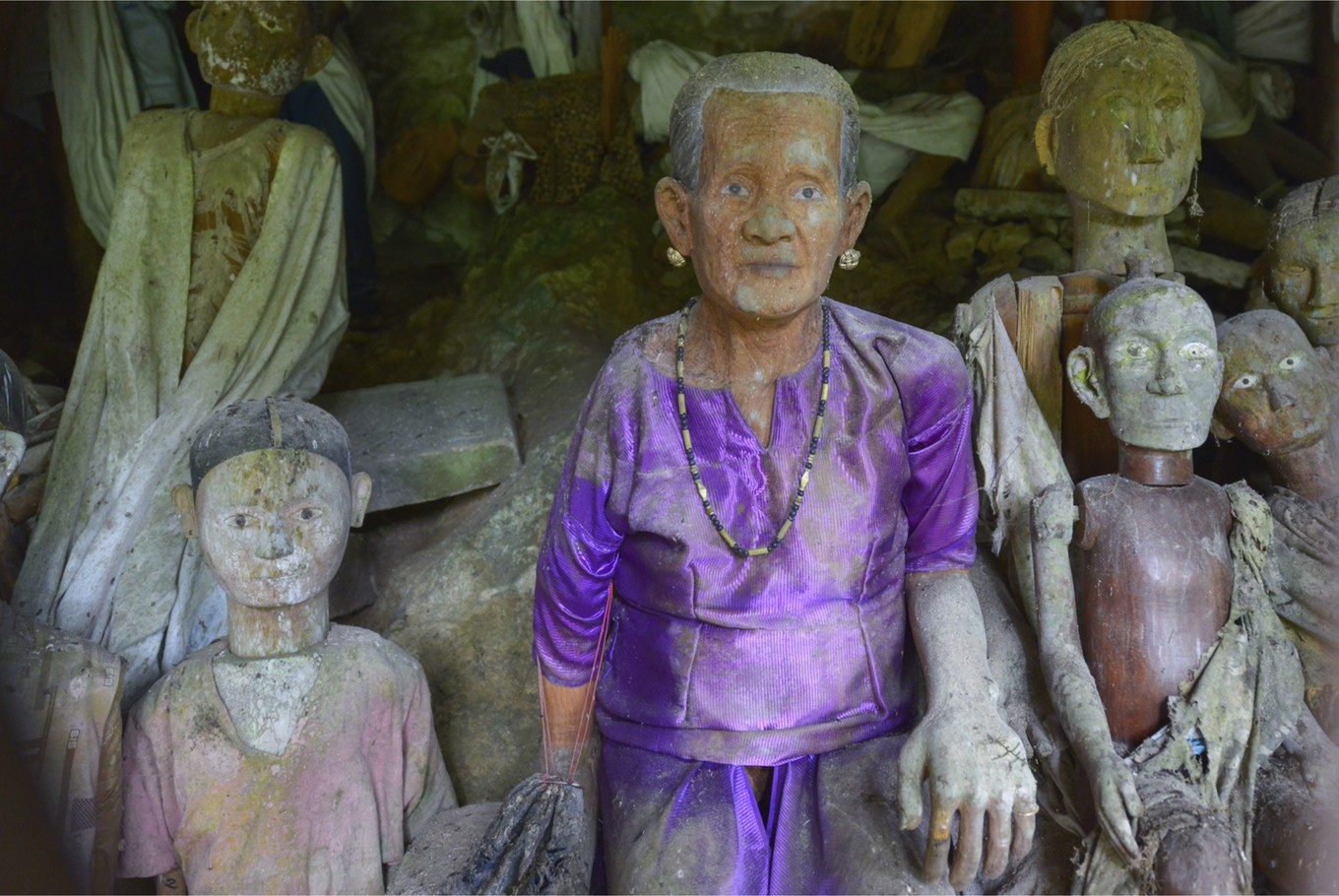 Tana Toraja cemetery.(Shutterstock, Inc./File)
Tana Toraja cemetery.(Shutterstock, Inc./File)
Protection from the deceased
The sun was not very high that Sunday morning, but dozens of tourists had already flocked to Kete Kesu tourist village in Bonaran, North Toraja, South Sulawesi to see the carved stone graves on a high rocky cliff.
The site amazed them because they could see many skulls and bones scattered around the area.
A number of carved wooden effigies, called tau tau, standing at the entrance to the tombs stole their attention, encouraging them to snap pictures.
The tau tau is a replica of a dead person that is buried there.
Unfortunately, these wooden statues are not accompanied by any personal information on the deceased, triggering visitors’ curiosity.
“The tau tau are only for the wealthy,” said tau tau sculptor Simon Patu Ma’guling, who has been running his business for 25 years.
He said that each effigy represented the deceased and had the mission of guarding the tomb and protecting the living.
For the Torajan people, he explained, the wealthy, heroes and nobleman in North Toraja deserved tau tau for their funeral ceremony.
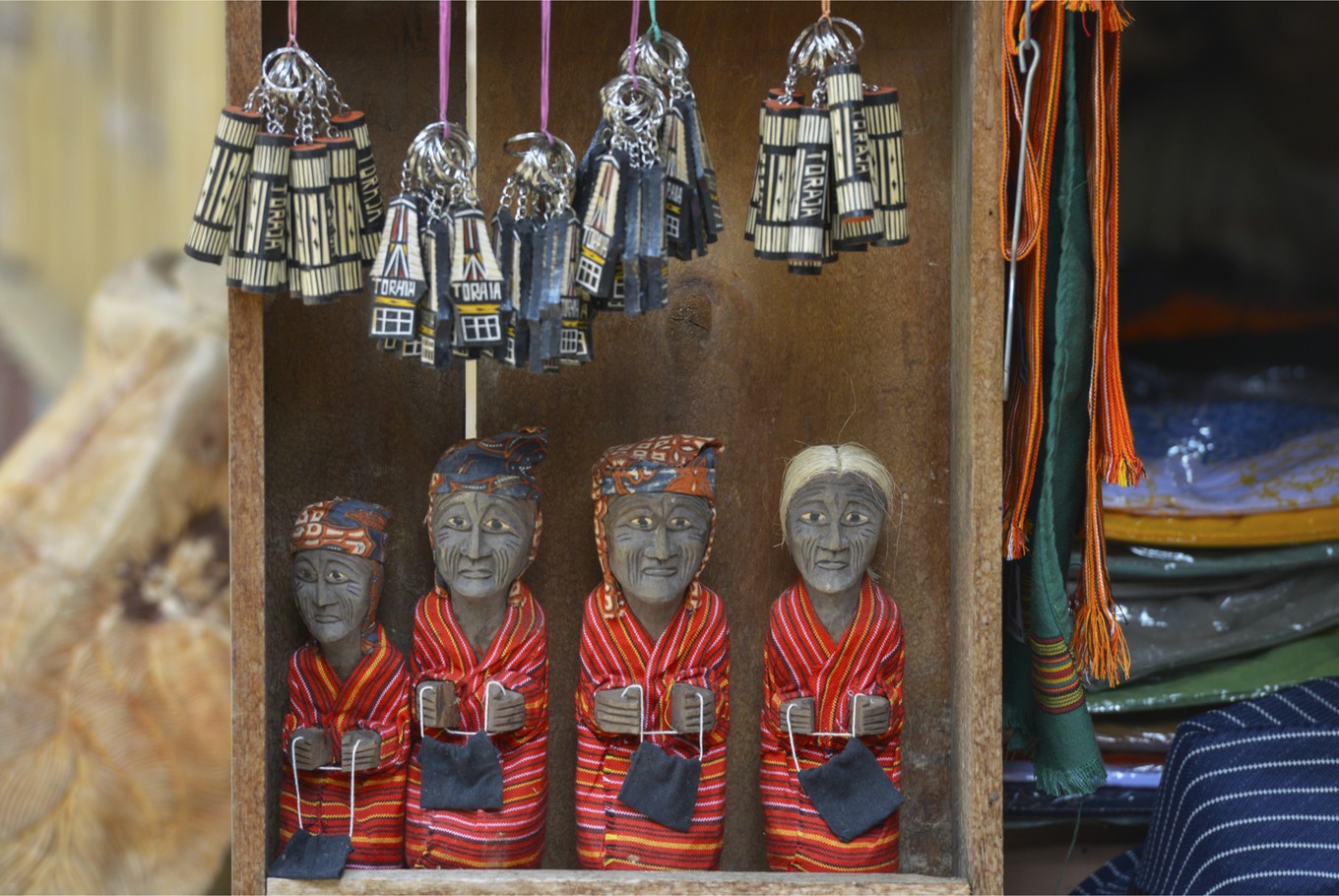 Dolls at a souvenir shop in Tana Toraja.(Shutterstock, Inc./File)
Dolls at a souvenir shop in Tana Toraja.(Shutterstock, Inc./File)
(Read also: Raja Ampat resort initiates donation program to protect marine life)
The Torajan people still recognize social class divisions, ranging from tana’ bulaan, the highest class of nobleman or king; tana’ bassi for public figures and the educated; to tana’ karurung for ordinary people and tana’ kua-kua, the lowest class, or slaves.
Simon, who usually receives two tau tau orders each month, said that only four tau tau makers remained in North Toraja.
The family needing the tau tau usually gave him the wood and a photograph of the deceased.
Simon said it took him eight days to complete each order.
“If the photograph is blurry, [it] can take 16 days,” he added.
The price of a tau tau always fluctuates, depending on the price of a buffalo, not the wood used.
Currently, one tau tau costs Rp 20 million (US$1,500), up from Rp 15 million last year.
Apart from taking local orders, Simon also receives tau tau orders from non-Torajans, including domestic and foreign tourists who want one as a souvenir.
Sometimes, he has a bad experience.
For example, 24 years ago, a Japanese man ordered a tau tau worth three buffalos.
However, the man never showed up. Even though many people wanted to buy the tau tau, 63-year-old Simon refused to sell it because he was still waiting for the buyer to come back.
“Maybe he [the Japanese man] thinks I am already dead,” he said.

